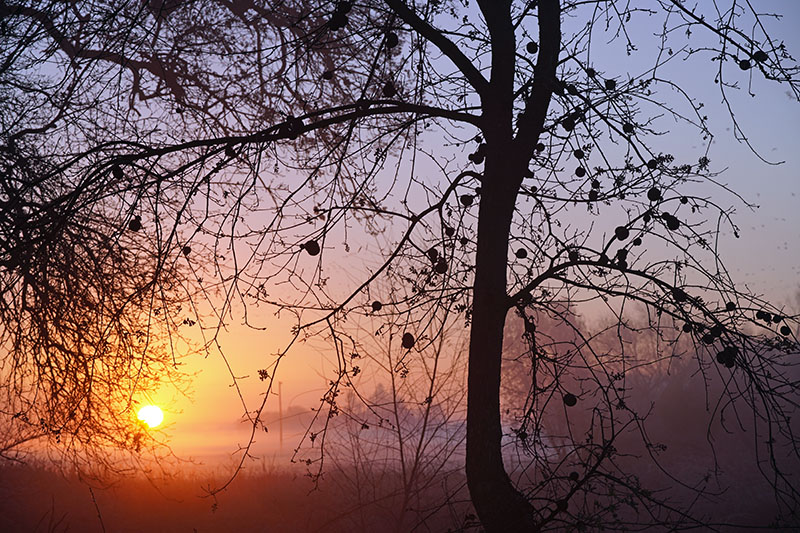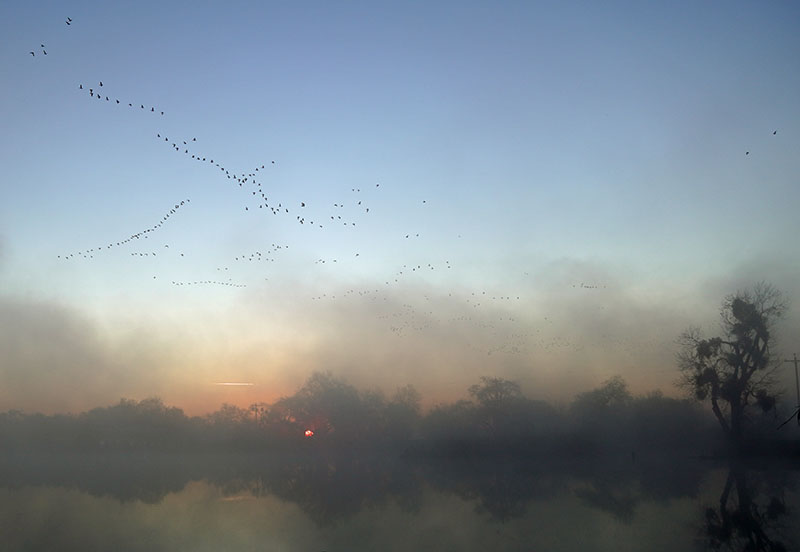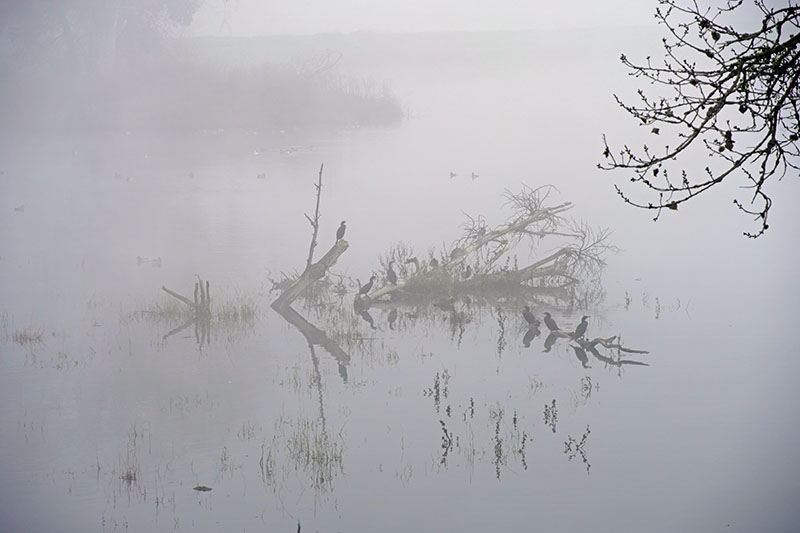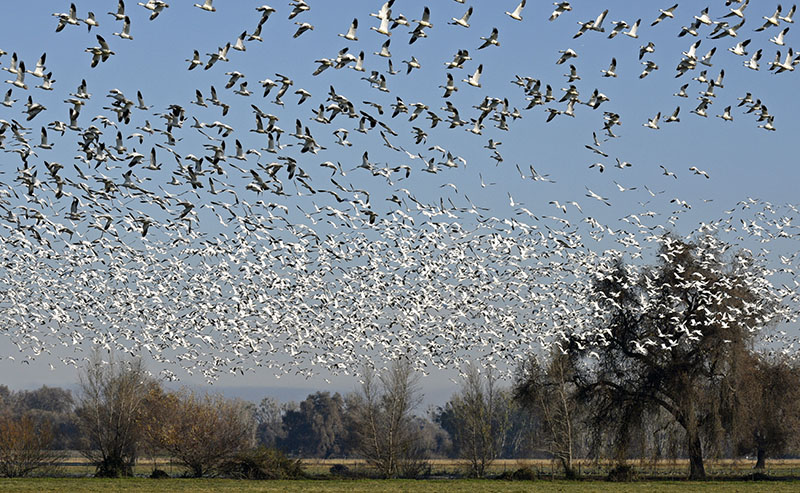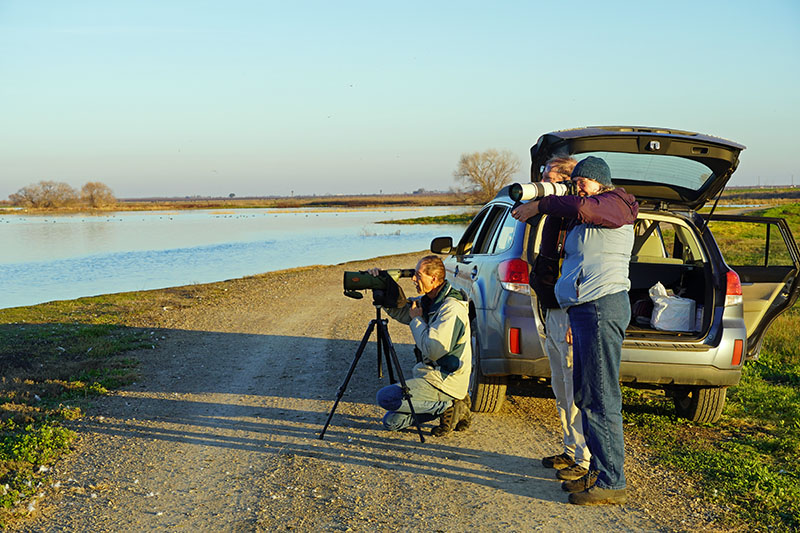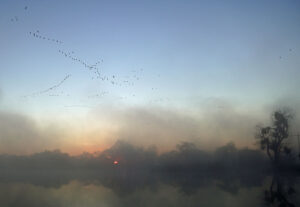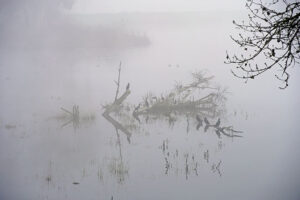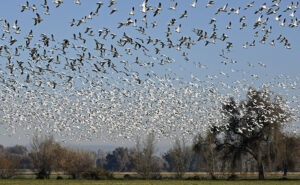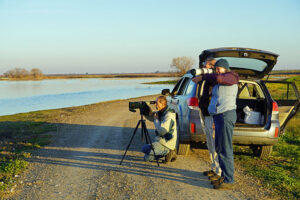January 2, Stanislaus County birders and friends scraped the frost off their windshields well before the sun rose and motored out to their assigned areas for the 122nd annual Audubon Christmas Count, a worldwide event that provides a huge database for fluctuations in bird populations around the world.
One of hundreds of compilers of local counts in the United States, Harold Reeve was joined by his wife Sharon and their friend Daniel Harris for their sector of the Caswell/Westley count circle in an area of the San Joaquin River National Wildlife Refuge (SJRNWR) ordinarily closed to the public.
Created in 1987 as part of an effort to restore habitat for the endangered Aleutian Canada Goose, the refuge now comprises over 7,000 acres of wetland and riparian habitat at the confluence of the San Joaquin, Tuolumne and Stanislaus Rivers in the northern San Joaquin Valley, the result of a partnership among local landowners with the U.S. Fish and Wildlife Service, the National Audubon Society and other conservation organizations.
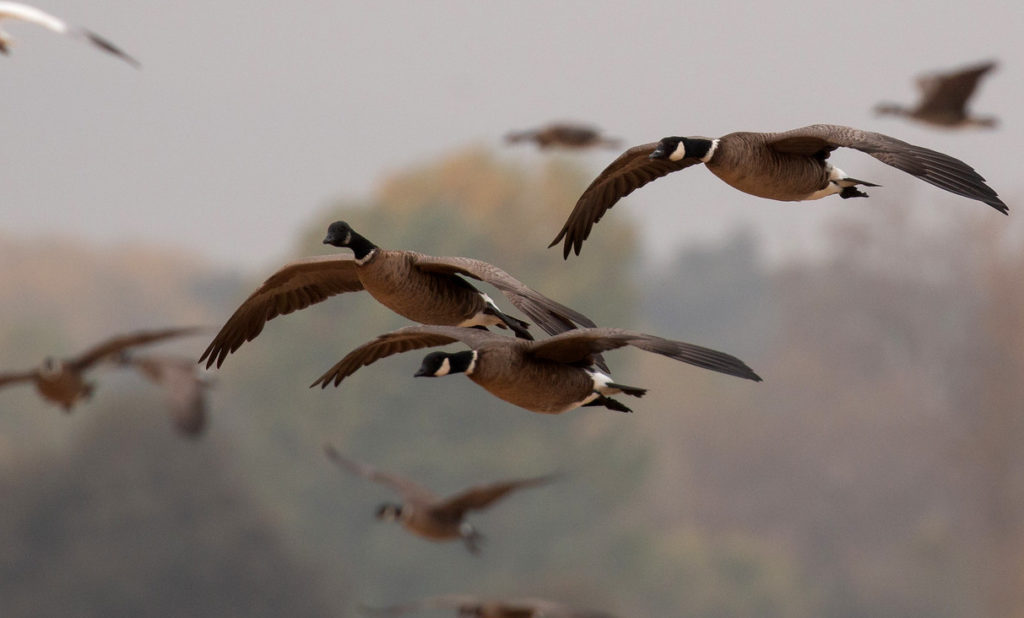
With a population now estimated at close to 200,000 birds, Aleutian Geese numbered fewer than 600 individuals when the refuge was established to protect their wintering grounds. Along with the dramatic increase in their numbers, the enhanced waterfowl habitat provides winter shelter for tens of thousands of other ducks and geese.
“When we counted in the early 90s,” said one birder, “It was a big day if we found seven or eight Snow Geese. Now, it’s not unusual to find thirty- or forty-thousand.”
In addition to recording numbers of geese and ducks, Reeve compiles totals for all bird species found within his 15-mile diameter count circle, an area that includes private as well as public property. Over time, the numbers provide a valuable database that tracks bird populations as indicators of environmental health throughout the world. It was data compiled by birders showing the decline of Bald Eagles, Osprey, and the California Condor that led to the identification of DDT as an environmental hazard.
“Goose Music” begins just before dawn and Reeve and company were there to hear it when a red sun rose in the east this first Sunday of the new year. Knowing he could record waterfowl numbers during the day as they roosted on ponds and fields within his count sector, Reeve headed for a protected riparian woodland near Caswell Park to look for song birds and sparrows. Later, as he drove levy and dirt roads on public and private property he would note larger-than-usual numbers of ravens and crows and an ongoing decline in numbers of White-tailed Kites and American Kestrels.
Audubon Christmas Count 2022 San Joaquin River Refuge
“We didn’t see a kestrel all day,” said Reeve, wondering whether the decline was just a local anomaly or could signify a greater problem. Only time and accumulated data will tell.
Meanwhile, the Reeve team was hoping to list a total species number somewhere between one-hundred thirty and one-hundred forty for the count circle as a whole. His territory alone often records over one-hundred species, but numbers can fluctuate due to several factors, especially weather. Sunday had dawned clear and cold. Then the fog rolled in.
Appearing in the west like a dark pall of smoke, fog crept into the refuge in the late morning hours and made birding by silhouette the default option, at least until it burnt away into a bright blue sky filled with ducks, geese and cranes. Undeterred by the opaque atmosphere, Reeve and company continued on the spirit of birders everywhere, including places like Barrow Alaska, where severe weather once resulted in a failure to record even one bird.
Sundown found the Reeve team scanning a large pond for one or two last ducks as they tried to complete the list of species found in their sector over the years of the count.
“Have you seen a Canvasback or Blue-winged Teal?” asked Reeve when he encountered a fellow birder, “We still need those.” Overhead, the sky was filled with birds and goose music. Like any day in nature, it was good to be outside.

